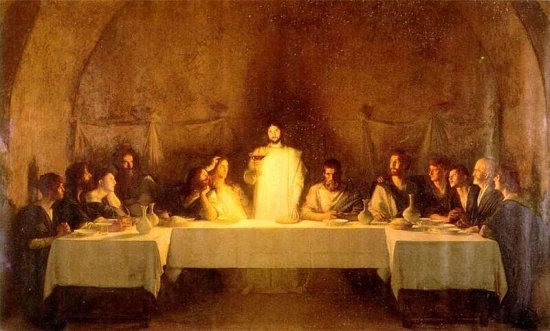
უფალი, მისი სხეულის სახით, როგორც იესო ქრისტე, ხშირად მოიხსენიებენ, როგორც ღვთის ძეს და კაცის ძეს, ზოგჯერ კი მარიამის ძედ.
ლუკა 1:35 ცხადყოფს, რომ იგი მარიამში იყო ჩაფიქრებული ღვთისმშობლის მიერ სულიწმიდის მოქმედებით.
მინისტრობის პერიოდში იგი ხშირად ლოცულობდა მამას და მამას იხსენიებდა, როგორც ცალკეულ არსებას, თუმცა მან ასევე გააკეთა ისეთი განცხადებები, როგორიცაა "მე და მამა ერთი ვართ" (იოანე 10:30).
ადრეულმა ქრისტიანებმა ურთიერთობა გააკვირვეს და მასში ჭიდაობა მოხდა 325 წელს ნიკეის საბჭოში (თურქეთში) და ახ.წ. 381 წელს კონსტანტინოპოლში მომდევნო საბჭო. ეს მიიღო თანამედროვე ფორმით ათანასე რელიგიაში, მიღებული ქრისტიანული ეკლესიების მიერ VI ს-ში. ეს აღთქმა ამბობს, რომ ძე არ არის გაუთვალისწინებელი, არსებობს მარადისობისგან და ქმნიან მამამისისგან; ასევე ნათქვამია, რომ ისინი ორი "პიროვნებაა" (სულიწმიდით, როგორც მესამე), რომლებიც ერთი ღმერთია.
მწერლობებში ნათქვამია, რომ ეს ქმნილება უაღრესად ხარვეზირებულია, ის ხალხს სამი ღმერთის შინაგანი რწმენისკენ მიჰყავს და საბოლოოდ, მან ქრისტიანული ეკლესიის სულიერი ვარდნა გამოიწვია. ამის ნაცვლად, ისინი გვთავაზობენ განმარტებას, რომელიც შეჯამებულია შემდეგში:
უფალი არის სრულყოფილი სიყვარულის მოცემული ფორმა, სრულყოფილი სიბრძნის საშუალებით, რომელიც წარმოადგენს ადამიანის საბოლოო ფორმას. როგორც ასეთი, მას აქვს ფუნქციები, რომლებიც შეესაბამება ადამიანის სხეულის ყველა ნაწილს, ორგანოების, ქსოვილების, თუნდაც ცალკეული უჯრედების მარჯვნივ. ის, ფაქტობრივად, საბოლოო, ღვთიური ადამიანია.
ეს კაცობრიობა არსებობდა ქმნიდან, როგორც სულიერი რეალობა, მაგრამ არა ფიზიკური. სინამდვილეში, უფალმა შექმნა ფიზიკური სინამდვილე, კერძოდ, რომ ყოფილიყო რაღაც თავისგან დამოუკიდებლად, ასე რომ, მას შეეძლო მიყვარს რაღაც, რაც თავად არ იყო. ასე რომ, მან არ მისცა საკუთარ თავს ფიზიკური სხეული შექმნიდან.
როგორც ებრაული ეკლესია ახლოვდებოდა, ბოროტება იმდენად დომინანტი გახდა, რომ კაცობრიობას საფრთხე ემუქრებოდა უფლისა და ზეციდან მოწყვეტისთვის. უფალმა იცოდა, რომ სწორად რომ ეთქვა, მას უნდა გადაეკვეთა უფსკრული მის სულიერ რეალობასა და მის შექმნილ ფიზიკურ სამყაროს შორის. მან ეს გააკეთა თავისი არსის მარიამში გადასვლის გზით, ასე რომ მას შეეძლო ფიზიკური დედისგან დამზადებული ფიზიკური სხეული ფიზიკური დედის მეშვეობით.
თანამედროვე მეცნიერებიდან ვიცით, რომ ყველა ბავშვი მამამისისგან იღებს ინფორმაციას, გენეტიკური კოდირების მცირე ნაწილი. მთელი მასალა - ფაქტობრივი მოლეკულები, რომლებიც კუნთებსა და ძვლებს, ნერვებსა და ორგანოებს ქმნიან - დედისაგან მოდის. ასეც მოხდა იესოსთან, რომელიც დაიბადა მთლიანად ადამიანში, მისი ღვთიური სულის ნამდვილი შეურაცხყოფის გარეშე.
ეს სწრაფად შეიცვლებოდა; ჩვენ ვიცით, რომ იგი გაიზარდა "სულით ძლიერი, სიბრძნით სავსე" და "ღვთის მადლით" (ლუკა 2:4012 წლის ასაკში მისი ძველი აღთქმის შეცნობამ გააკვირვა ტაძარში არსებული მასწავლებლები (ლუკა 2: 46-47) და რომ 12 წლის ასაკში მან იცოდა, რომ მისი "მამის საქმე" მარიამის და იოსების მიღმა იყო (ლუკა 2:49).
ნაწერებში ნათქვამია, რომ მისი „მამის საქმე“ სინამდვილეში ჯოჯოხეთში მონაწილეობდა. მან ეს იგივე გააკეთა, როგორც ჩვენ გავაკეთეთ: ცდუნების მეშვეობით. თავის ფიზიკურ სხეულთან ერთად, მან მარიამისგან მემკვიდრეობით მიიღო ადამიანის ეგოისტურობისა და ბოროტების სურვილის სრული დატვირთვა. ჯოჯოხეთს შეეძლო მათზე თავდასხმა, ისევე როგორც ჩვენში, მათ სურვილების ჩახშობით და ზეწოლა მოახდინეს მათზე. მაგრამ ეს უფლისთვის გაცილებით უარესი იყო, ვიდრე ეს ჩვენთვის, ორივე იმის გამო, რომ მან თავი გამოიჩინა ყველა შესაძლო ცდუნების უმაღლეს ხარისხზე და ასევე იმის გამო, რომ ჯოჯოხეთებმა იცოდნენ ვინ და რა იყო ის და თავს დაესხნენ ყველაზე დიდი ძალის გამოყენებით. ეს ცდუნებები მხოლოდ რამდენიმე ადგილზეა გამოსახული - 40 დღის განმავლობაში უდაბნოში და გეთსიმანიის ბაღში, განსაკუთრებით - მაგრამ მწერლობა ამბობს, რომ ისინი მუდმივი იყო მთელი მისი ცხოვრების განმავლობაში.
სასწაული ის იყო, რომ რადგან უფალი შეექმნა და დაიპყრო თითოეული ცდუნება, მან არა მხოლოდ აიყვანა ჯოჯოხეთის ეს კონკრეტული ნაწილი, არამედ მან საკუთარი თავის ცდუნებული ნაწილი ფიზიკურ მატერიამდე გადააქცია. ეს იმას ნიშნავდა, რომ მისი სახელმწიფო მინისტრობის პერიოდში ადამიანები, რომლებმაც სხეული ნახეს და შეეხეს, ძირითადად ღვთიური იყო, ფიზიკური მატერიის მხოლოდ ვეტერინარებით. ბოლო ამ ვესტიბუტიდან გარდაიქმნა ის ცდუნებებით, რომელიც მან განიცადა ჯვარზე, ისე, რომ შემდგომში დასვენებული სხეული იყო ის, რაც მთლიანად ღვთიური იყო. ამიტომ ის შეიძლება გაქრეს: უფალმა სინამდვილეში იგი საკუთარ თავთან ერთად სამოთხეში წაიყვანა. როგორც მწერლებმა თქვეს, "ღმერთი გახდა ადამიანი და ადამიანი გახდა ღმერთი".
მაშინ „ძე“, ანუ - უფლის ფიზიკური თვითობა - არ იყო ისეთი რამ, რაც არსებობის მიღმა არსებობდა. ეს იყო ფიზიკური კონტეინერი უფლისთვის, რომელიც შეიქმნა მარიამის მეშვეობით, გარდაიქმნა ღვთიური, უფლის ცხოვრებით და სამუდამოდ წაიყვანეს სამოთხეში, როდესაც მოწაფეები გამოაგზავნეს ქრისტიანული ეკლესიის დასაწყებად.
სინამდვილეში, ნაწერები - და ამ ვებ – გვერდი - მიზანმიმართულად იყენებენ ტერმინს „უფალი“, რათა იგულისხმებოდეს როგორც ღვთიური არსება (იეჰოვა, ან მამა), ისე ღვთიური ადამიანი (იესო, ან ძე), როგორც ერთი ადამიანი, რომელიც ის არის.
(რეკომენდაციები: ღვთიური სიყვარული და სიბრძნე221, 233; ახალი იერუსალიმის სწავლება ღმერთის შესახებ58; ნამდვილი ქრისტიანული რელიგია81, 92, 102, 153 [2], 163, 164, 166, 167, 168, 170, 172, 175)







